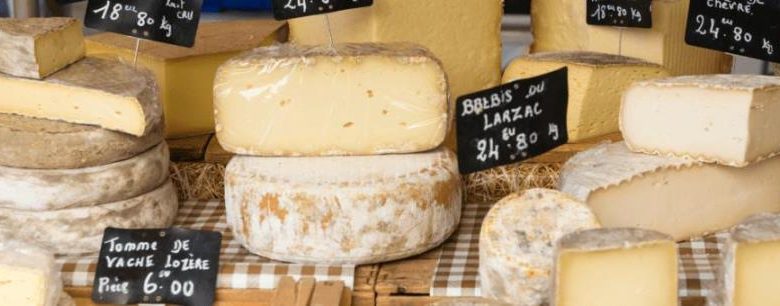Sampling French Cheeses: A Journey through Fromage

Sampling French Cheeses: A Journey through Fromage
Introduction to French Cheeses
French cheeses are renowned worldwide for their rich flavors, diverse textures, and centuries-old traditions. From soft and creamy Camembert to tangy and pungent Roquefort, France offers a vast array of cheese varieties to tantalize your taste buds. Embark on a delicious journey through fromage and discover the art of sampling French cheeses.
Exploring the Cheese Regions
France is divided into several distinct cheese regions, each known for its unique cheese-making techniques and flavors. Let’s explore three of the most famous cheese regions:
1. Normandy
Famous for its creamy and buttery cheeses, Normandy is home to classics like Camembert and Brie. These soft cheeses are made using the rich milk of cows grazing on the lush Normandy pastures.
2. Auvergne
Located in central France, Auvergne is known for its selection of robust and flavorful cheeses. From the earthy Fourme d’Ambert to the sharp and tangy Bleu d’Auvergne, this region is a must-visit for cheese enthusiasts.
3. Provence
Provence is not just famous for its lavender fields and sunny beaches; it’s also a cheese lover’s paradise. Discover the delicate flavors of Banon, a cheese wrapped in chestnut leaves, or indulge in the tangy taste of Banon.
Tips for Sampling French Cheeses
Sampling French cheeses can be an overwhelming experience, given the vast variety available. Here are a few tips to enhance your cheese-tasting journey:
1. Start with Milder Cheeses
If you’re new to French cheeses, start with milder varieties and gradually work your way up to the stronger, more pungent ones. This will help your taste buds adjust and appreciate the flavors better.
2. Pair with Complementary Tastes
Pairing cheeses with accompaniments can elevate the tasting experience. Consider pairing a nutty Comté with a crisp baguette, or a tangy Roquefort with sweet figs to balance the flavors.
3. Experiment with Wine Pairings
French cheeses often pair well with different types of wine. For example, a creamy Camembert goes perfectly with a light and fruity Sauvignon Blanc, while a strong Bleu d’Auvergne pairs well with a bold red like Cabernet Sauvignon.
Frequently Asked Questions (FAQs)
1. Can I bring French cheeses back home from my trip?
Yes, you can bring French cheeses back home, but it’s essential to check the customs regulations of your home country. Some countries have restrictions on importing certain types of cheeses, so be sure to comply with the guidelines.
2. How should I store French cheeses?
To maintain the quality and flavor of French cheeses, it’s important to store them properly. Most soft and creamy cheeses should be stored in the refrigerator, wrapped in wax or parchment paper to prevent them from drying out. Hard cheeses can be wrapped tightly in plastic wrap and stored in a cool, dark place.
3. Are there vegetarian-friendly French cheeses?
Yes, there are several vegetarian-friendly French cheeses available. Cheeses made from cow’s or goat’s milk such as Brie, Camembert, and Comté are typically suitable for vegetarians. However, it’s always best to check the ingredients and consult with the cheesemonger to ensure they meet your dietary preferences.
Embark on a delightful journey through the world of French cheeses and savor the incredible flavors and textures they have to offer. Whether you’re a cheese connoisseur or an enthusiastic amateur, sampling French cheeses will undoubtedly be a memorable gastronomic experience. Bon appétit!



